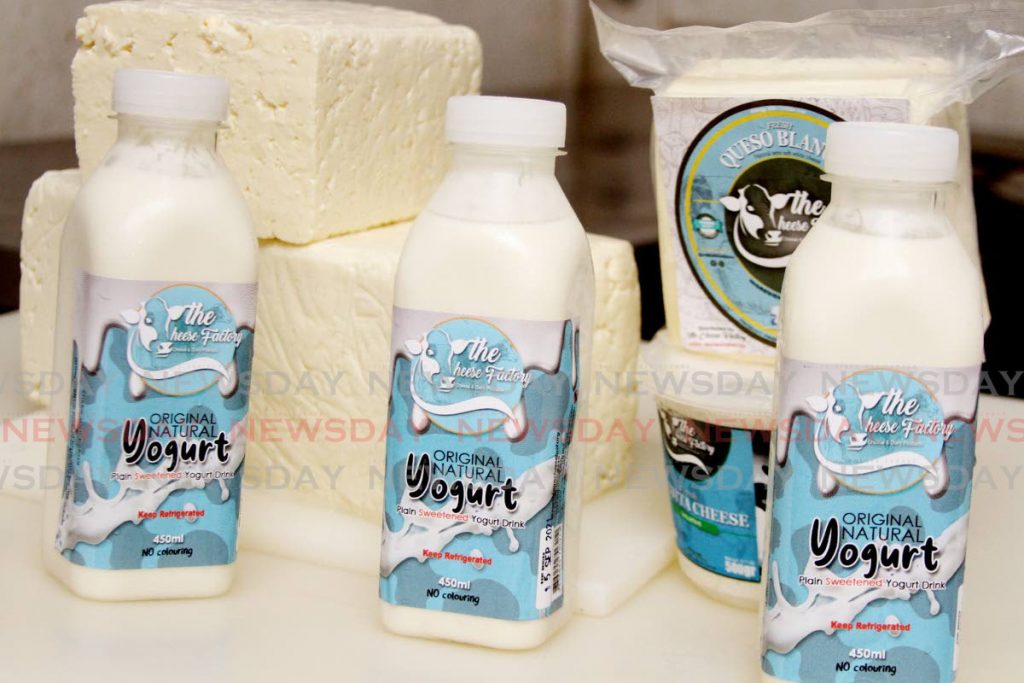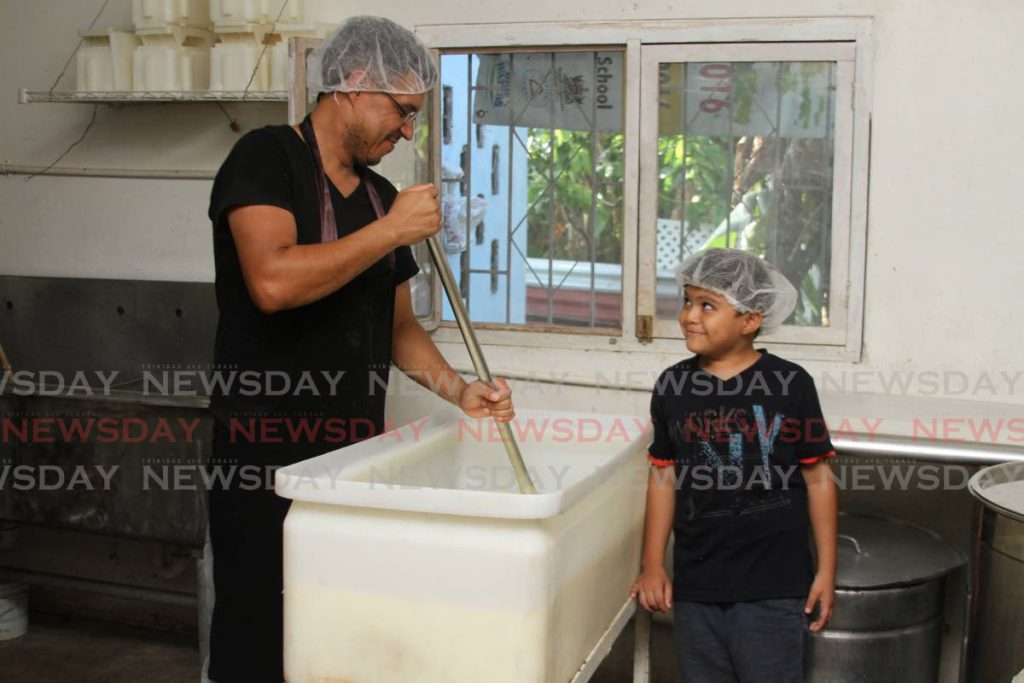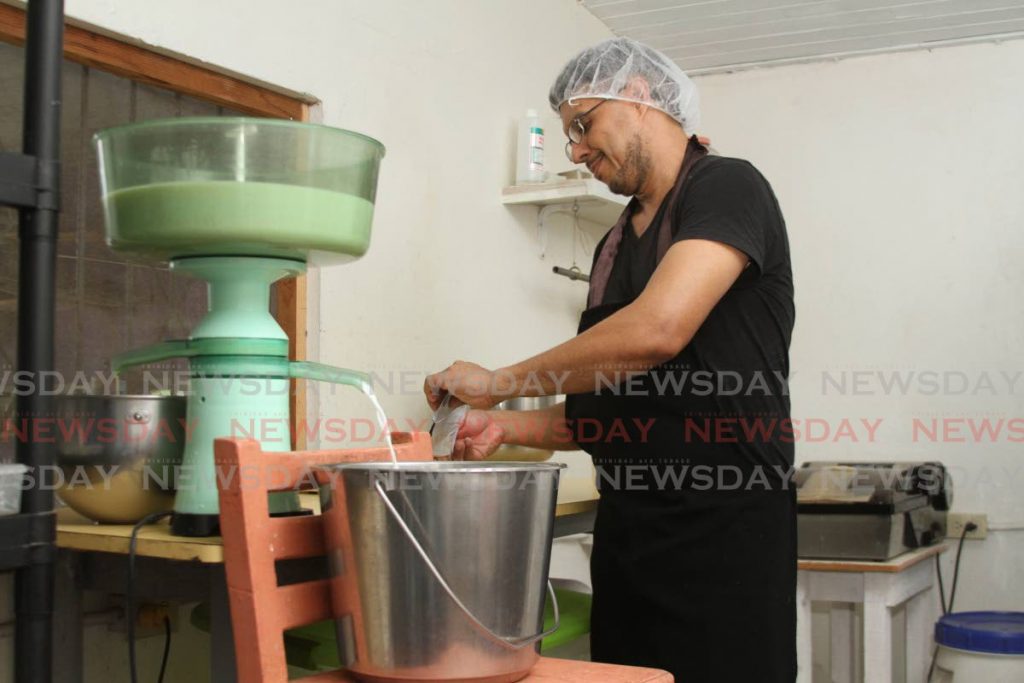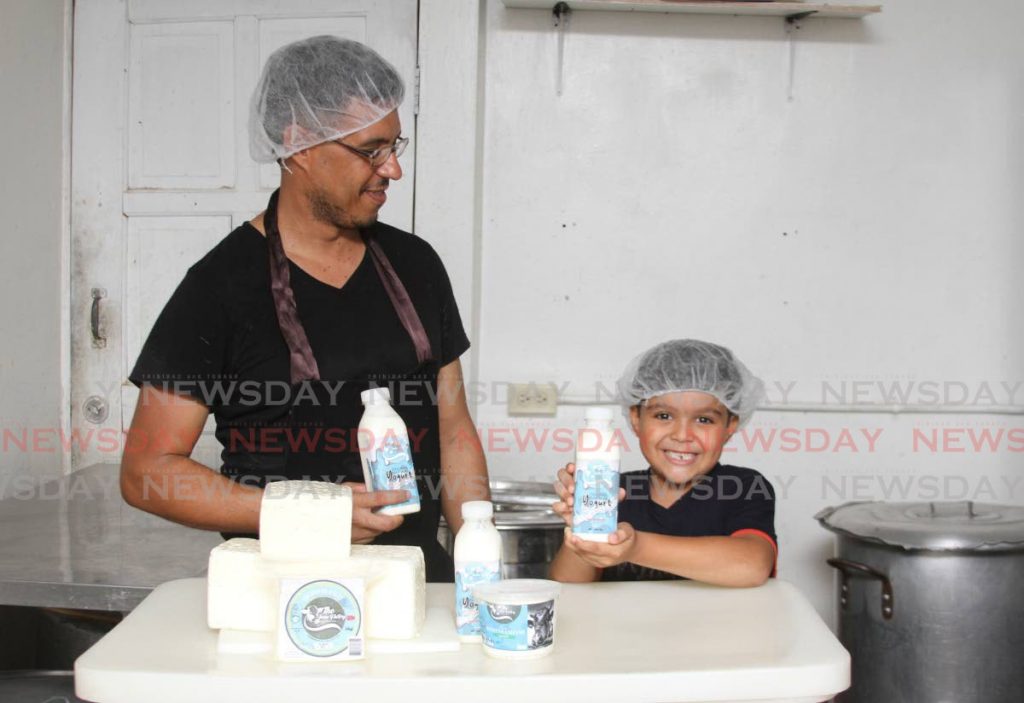White cheese: Venezuelan culture, tradition become a Trinidadian art

With bread or with cookies, with arepas or sada roti, with cachapas or roti, in empanadas or aloo pies – in any Venezuelan or Trinidadian dish, white cheese has been adding to the cuisine of Trinidad and Tobago.
The art of making Venezuelan-style cheese, traditionally produced from either raw or pasteurised milk, is now practised here for the enjoyment of locals as well as Venezuelans.
One of the main exponents is Alexander Plaza, 42, a Venezuelan-Trinidadian who settled here 18 years ago after experiencing life in various countries in Europe.
His Trinidadian mother, Melva Azocar, led him to settle permanently in his second country, TT, where he now has a family of his own: his wife Evelyn and his three children: Caleb, 12, Isaac, ten, and Eleazar, seven.
Plaza knows Venezuelans have an addiction to white cheese, which is not frequently made in other countries – hence his idea of making it also part of Trinidadian cuisine.

"When I came to Trinidad, I spent several years without going to Venezuela. During that time my mother travelled once and I asked her to bring me white cheese – but she couldn't get it through Customs and I was left wanting it."
This desire for the taste of his homeland prompted Plaza to learn about white cheese, until eventually he became an expert cheesemaker.
“Fifteen years ago I called a friend in Venezuela who knew how to make white cheese and he gave me a simple explanation, and from that moment I began to try. I made contacts here with owners of farms that had cows and I bought the milk to make my cheese on weekends,” Plaza remembered.
His family and close friends were the first to taste his semi-hard white cheeses.
“Through many tests of taste and texture, each step and quantity of ingredients was written down until I found the exact formula. Then I began to offer it to other friends, and word spread in Trinidad. Since then I have not stopped."
Venezuela is the Latin American country – and perhaps a world leader – with the greatest variety of fresh cheeses,producing at least 30 different types, of which 60 per cent are handmade.
"In Venezuela, cheese is eaten in many forms and in many varieties, but in Trinidad, as it's a different product from the traditional yellow cheese the locals consume, I decided to only dedicate myself to a few derivatives," Plaza said.

He makes semi-hard cheese, ricotta (creamier unsalted cheese), whey (liquid), yogurt, mozarella and telita.
From his studies of milk, Plaza realised he had to perfect his technique and that led him to pasteurise his products.
"I did a lot of tests, from milking the cows to eliminating pathogens to help improve the cheese and give it a certain standard to keep it fresh for 60 days."
Plaza built his own pasteurisation equipment because he couldn't find any that would fit his small business space inTunapuna. He also bought a milk skimmer, tubs to store the cheese and jugs to transport the milk, among other equipment.
Keeping the white-cheese business stable has been a great challenge, owing to TT's dairy production capacity.
“Dairy production is very low. At one time there was a boom, but unfortunately it did not adapt to new technologies and the farms stopped producing, as they lost some of the opportunity to see livestock as a business. The farm owners do not see it as a source of profit, they do not make the corresponding analyses to improve on the failures and increase production,” said Plaza.
But he believes TT has favourable conditions for extensive livestock and dairy production both for local consumption and for export.
"Since there is little milk production, prices rise. They have also risen in the cheese business, and that has slowed down the sales on the streets a bit, because the final prices end up being high."
Plaza uses eight-ten litres of fresh milk for every kilogramme of semi-hard cheese. He uses more than 300 litres of milk weekly for 15-18 kilos of cheese.
"I have several farmers in Turure, in Wallerfield and in Carlsen Field, who distribute the milk to me weekly so I can keep making the cheese."
Plaza explained there are variations depending on the time of year; the manufacture and sales change, since it is a totally handmade product.

“We have moved away a lot from what is ours. People believe that white cheese is Venezuelan, but no: it is made in the Venezuelan style and it is Trinidadian, because it is made here. People should have that sense of belonging and promote the local production.
“We have always thought that what is imported is better, and it is not always the case. It may be cheaper, but not better than what is done here – and that is what we must promote, that what is done here is the best, and eat it to boost the local economy." His cheese is sold at various supermarkets and to restaurants in TT.
How to make white cheese:
The process begins by heating the milk to between 30 and 40 degrees C, depending on the type of cheese you want to make.
When it reaches that temperature, the lactic fermenting culture is added and it is left for approximately 45 minutes.
Then the rennet is put in: this makes the milk coagulate.
After the cheese has clotted for 45 minutes or an hour, the curd is cut so that it begins to release the whey.

When the desired texture is reached, the liquid is drained and the cheese placed in moulds. Depending on the type of cheese, it may or may not be pressed.
The next day, the cheese is removed from the mould for the maturation stage until it reaches a specific temperature.
Finally, the appropriate packaging is chosen to preserve the safety and nutritional values of the cheese.
Types of Venezuelan-style white cheese
Guayanés, goat, palmita, fresh smoked, buffalo mozzarella, smoked mozzarella, braid or crineja, hand, telita, Santa Bárbara, hard or llanero, Andean curd, pasteurised, ricotta or goat or buffalo cottage cheese, seasoned, Zulia palmi, hand guaya, cream or custard, buffalo, seasoned goat or French type, year or black shell, temptation, blue and smoked.

Comments
"White cheese: Venezuelan culture, tradition become a Trinidadian art"